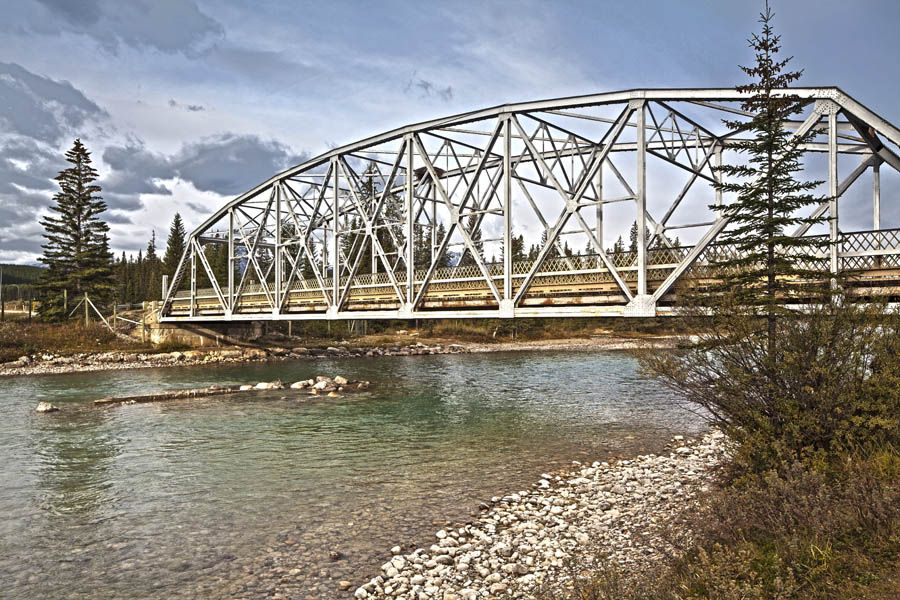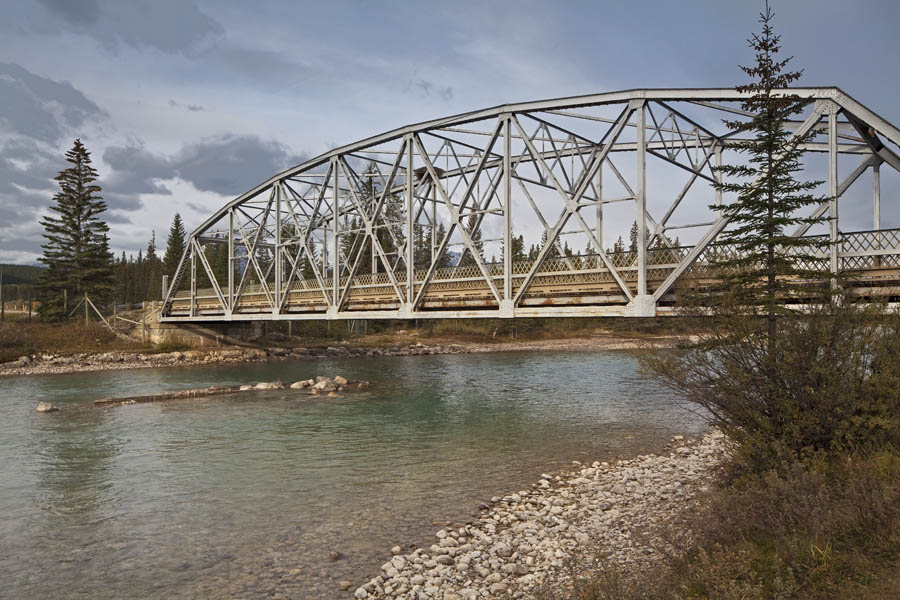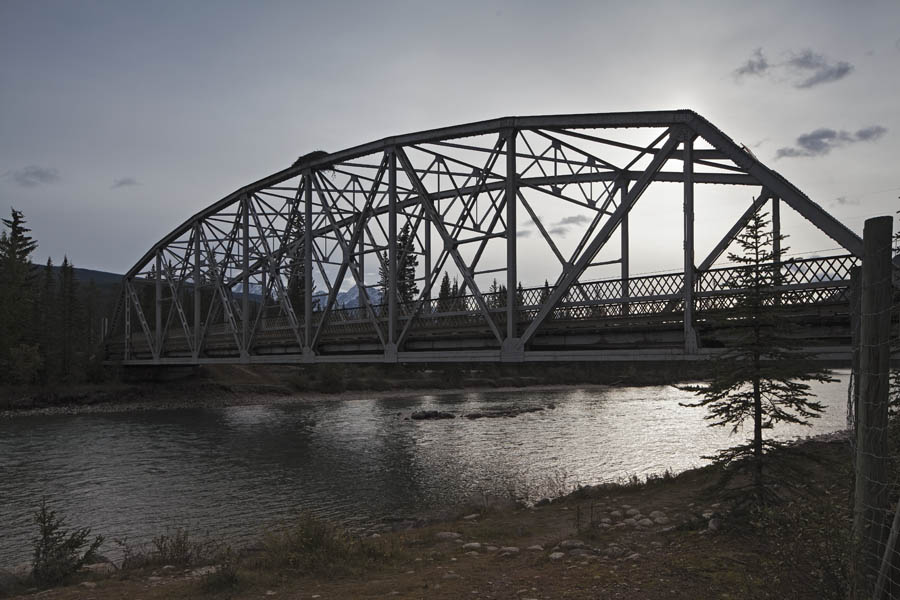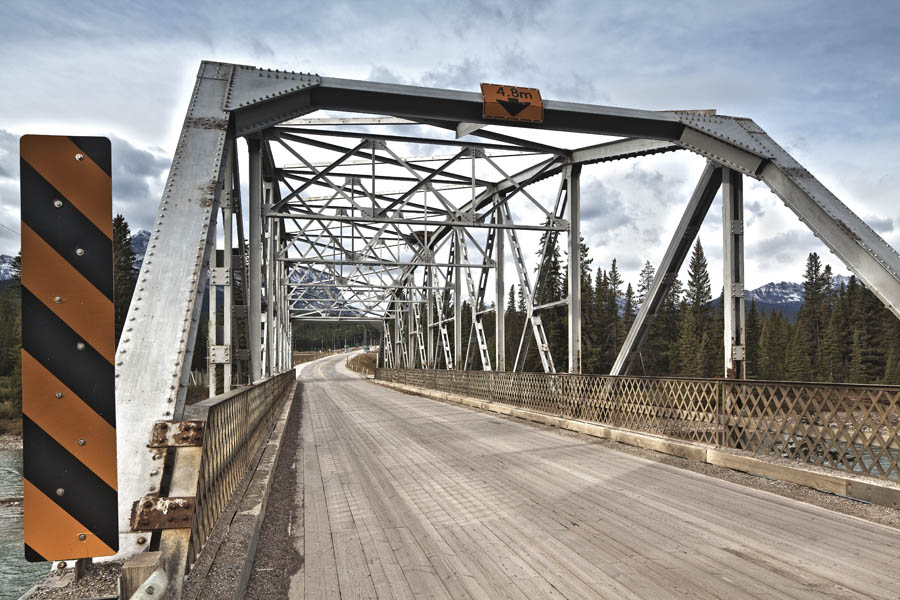I travel often to the area of Castle Junction, a place rich in photographic opportunities. The junction, named for nearby Castle Mountain is the intersection of the Trans-Canada Highway and Highway 93, the road to Radium B.C. and the Columbia River Valley. A short section of Highway 93 going north crosses the Bow River and connects to the Bow Valley Parkway, Highway 1A. I was in this area yesterday and while I was there, decided to photograph the old bridge crossing the river. It’s an interesting structure replete with interesting features and strong photographic elements.
I took side views from the river bank on each side of the bridge. The first one was shot facing westward with the sun behind. A pretty straightforward exposure. The picture was taken with a 24 mm tilt-shift lens, adjusted to give me a sharply-focused image throughout. I thought that the image could benefit from some High Dynamic Range (HDR) toning and used Photoshop to get this more “painterly” look. HDR is a technique used in photography to capture a greater range between the lightest and darkest areas of an image than with current standard photographic methods. HDR images can represent more accurately the range of intensity levels found in real scenes, and is often captured by combining differently exposed pictures of the same subject matter. People will often observe that HDR photos look more like paintings than photographs. Painterly? I’ve included the original image below the HDR photo for purposes of comparison.


The next picture was taken from the other side of the bridge, facing eastward into the sun. Taken only minutes apart, this shot is quite different because it is backlit and the bridge is in silhouette. I positioned the camera to place the sun directly behind the bridge structure on the right side, avoiding direct sunlight into the lens. I like the bright areas, the sun diffused by the bridge structure and the reflected light off the water, achieved without the overwhelming brilliance of direct sunlight.

My last photograph for today is my favourite, taken from the road at the north end of the bridge. Again, I took the picture with the tilt-shift lens and applied HDR toning. This image is a better example of what can be achieved with this technique. The detail of the rivets, the texture and colour of rusted areas and gravel, and the detail of the wood decking on the bridge is superior to what you can achieve with a conventional photograph. HDR works well for a scene like this where there is an abundance of interesting detail.

Test of Observation Skills: Did anyone notice the osprey nest atop the bridge structure?
A pair of osprey return to this nest every year where they hatch 2-3 young birds. Great to watch them fish and feed the fledglings during the summer. They all depart for warmer climes in the autumn.
